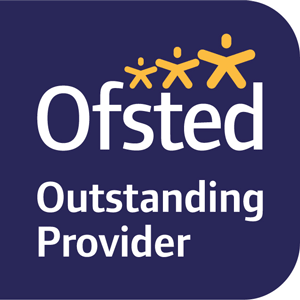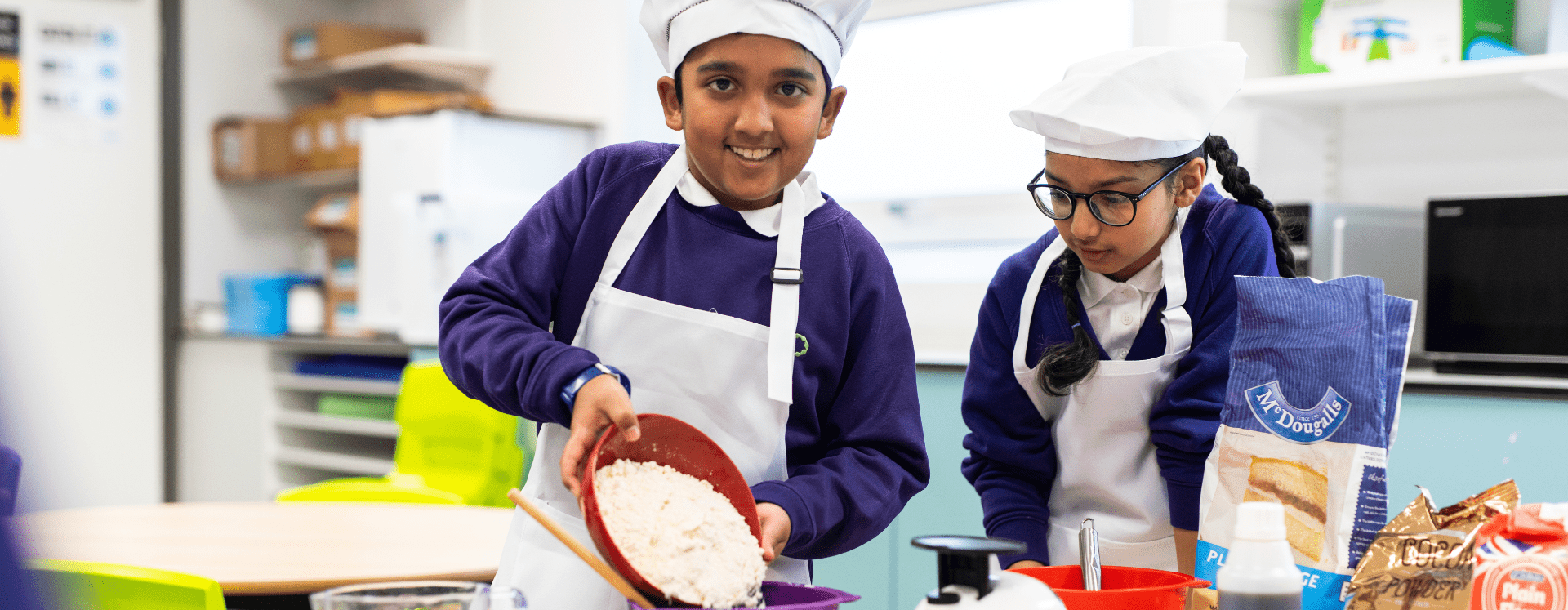Maths
Mathematics is a key life skill that enables an individual to participate fully as a member of society. Mathematics is a creative and highly inter-connected discipline that has been developed over centuries, providing the solution to some of history’s most intriguing problems. It is essential to everyday life, critical to science, technology and engineering, and necessary for financial literacy and most forms of employment. A high-quality mathematics education therefore provides a foundation for understanding the world, the ability to reason mathematically, an appreciation of the beauty and power of mathematics, and a sense of enjoyment and curiosity about the subject.
Our mathematics curriculum is based on the expectations and aims of the 2014 National Curriculum for mathematics and the 2021 statutory framework for the Early Years Foundation Stage. Content is carefully sequenced through the year groups according to the mathematics progression map (see pages 23-30 of the Mathematics Curriculum Framework below) which shows how each area of mathematics progresses as children get older.
Maths is taught according to the mathematics mastery approach. This is a transformational approach to mathematics teaching, focussed on deep learning over time (see pages 69 of the Mathematics Curriculum Framework below):
The aims of our mathematics curriculum provision are to support children to:
- Have rich and enjoyable experiences;
- Develop positive and confident attitudes;
- Reason mathematically by following a line of enquiry, conjecturing relationships and generalisations, and developing an argument, justification or proof;
- Solve problems by applying their mathematics to a variety of routine and non-routine problems with increasing sophistication, including breaking down problems into a series of simpler steps and persevering in seeking solutions;
- Develop the correct mathematical vocabulary;
- Work independently and collaboratively;
- Use technology to develop mathematical concepts;
- Use and apply mathematical knowledge to real-life contexts;
- Become fluent in the fundamentals of mathematics.
Maths Long Term Planning:
| Autumn 1 | Autumn 2 | Spring 1 | Spring 2 | Summer 1 | Summer2 | |
| Year 1 |
Number and place value Number and place value (2) Number – Addition and subtraction |
Number – Addition and subtraction Geometry (Shape) Number and place value (3)
|
Number – Addition and subtraction (2) Number – Addition and subtraction (3) Number and place value (4) |
Measurement (1) Measurement (2)
|
Number – Multiplication and division (1) Number – Multiplication and division (2) Number – Fractions (1) |
Geometry – Position and direction Number and place value (5) Measurement (3) Measurement (4) |
| Year 2 |
Unit 1: Number and place value- numbers to 100 Unit 2: Addition and Subtraction Unit 3: Addition/Subtraction
|
Unit 4: Multiplication and Division Unit 5: Multiplication and Division. Unit 6: Money Unit 7: Statistics
|
Unit 8: Measurement- length and height. Unit 9: Geometry – Properties of Shape Unit 10: Number and fractions |
Measurement – Tiime Unit 11: Geometry- Position and direction. Unit 12: Number- Addition and Subtraction- Problem solving and efficient methods Revision |
Unit 13: Measurement- Time. Unit 14: Weight, volume and temperature. |
Number and place value Number – Addition and Subtraction Number – Multiplication and Division Measurement – Money |
| Year 3 |
Number and place value Number – Addition and Subtraction (1) Number – Addition and Subtraction (2) |
Number – Multiplication and Division (1) Number – Multiplication and Division (2)
|
Measurement – Money Statistics Measurement – Length
|
Number – Fractions (1) Number – Fractions (2) Measurement – Time
|
Measurement – Time Geometry – Properties of Shapes Measurement – Mass
|
Measurement – Capacity Number and place value Number – Addition and Subtraction Number – Multiplication and Division |
| Year 4 |
Unit 1: Number and place value (1) Unit 2: Number and place value (2) Unit 3: Addition and Subtraction |
Unit 4: Measurement – perimeter Unit 5: Number – multiplication and division (1) |
Unit 6: Number – multiplication and division (2) Unit 7: Measure – area Unit 8: Number – fractions (1) |
Unit 9: Number – fractions (2) Unit 10: Number – fractions including decimals (1) |
Unit 11: Number – fractions including decimals (2) Unit 12: Measurement – money Unit 13: Time |
Unit 14: Statistics Unit 15: Geometry – angles and 2D shapes Unit 16 – position and direction |
| Year 5 |
Unit 1: Number and place value (Place value within 100,000) Unit 2: Number and place value (Place value within 1,000,000) Unit 3: Number – Addition and Subtraction |
Unit 4: Statistics (Graphs and Tables) Unit 5: Multiplication and Division (1) Unit 6: Measurement (Area and Perimeter) |
Unit 7: Multiplication and Division (2) Unit 8: Fractions – including decimals and percentages) (1) Unit 9: Fractions – including decimals and percentages (2) |
Unit 10: Fractions – including decimals and percentages (3) Unit 11: Fractions – including decimals and percentages
|
Unit 12: Fractions – including decimals Unit 13: Geometry – properties of Shapes (1) Unit 14: Geometry – Properties of Shapes (2) |
Unit 15: Geometry – Position and direction Unit 16: Measurement – Converting units Unit 17: Measurement – Volume and Capacity |
| Year 6 |
Unit 1: Place Value Unit 2: Four Operations Unit 3: Four Operations (2) Unit 4: Fractions (1) Unit 5: Fractions (2) |
Unit 6: Geometry – Position and Direction Unit 7: Decimals Unit 8: Percentages Unit 9: Algebra |
Unit 10: Measure- Imperial and Metric Measure Unit 11: Measure: Perimeter, Area and Volume Unit 12: Ratio and proportion |
Unit 14: Problem Solving Unit 12: Statistics Unit 13: Geometry – Properties of Shapes
|
Statistics Problem Solving Four Operations |
Geometry Fractions Decimals Percentages |
The primary emphasis in Key Stage 1 is to ensure that children develop confidence and mental fluency with whole numbers, counting and place value up to 100, including both basic number facts and understanding how to use and apply the four basic operations – addition, subtraction, multiplication and division.
In Years 3 and 4, the emphasis moves on to ensuring that children become increasingly fluent with whole numbers and the four operations, including number facts and the concept of place value. This ensures that children develop efficient written and mental methods and perform calculations accurately with increasingly large whole numbers. At this stage, children develop their ability to solve a range of problems, including with simple fractions and decimal place value. By the end of year 4, we expect all children to have memorised their multiplication tables up to and including the 12 multiplication tables.
In Years 5 and 6, the primary emphasis is to ensure that children extend their understanding of the number system and place value to include larger numbers. This should develop the connections that children make between multiplication and division with fractions, decimals, percentages and ratio. At this stage, children develop their ability to solve a wider range of problems, including increasingly complex properties of numbers and arithmetic, and problems demanding efficient written and mental methods of calculation. With this foundation in arithmetic, children are introduced to the language of algebra as a means for solving a variety of problems. By the end of year 6, children should be fluent in written methods for all four operations, including long multiplication and division, and in working with fractions, decimals and percentages.
Inclusion
We use a ‘maths mastery’ approach to teaching mathematics, which is a highly inclusive approach where all children achieve. When teaching maths for mastery, the whole class moves through units of work at broadly the same pace. Each concept is studied in depth and the teacher does not move to the next stage until all children demonstrate that they have a secure understanding of mathematical concepts. Thus, the vast majority of pupils work at the same pace, on the same age-related content, with different groups of pupils with different needs supported with additional visual and concrete scaffolds. A comprehensive list of scaffolds that are used to support all pupils to achieve can be found in the Maths Mastery chapter of the ‘Mathematics Curriculum Framework’ below. On occasion, where a child is unable to access the age-related curriculum, the mathematics progression map and maths mastery is used to ensure that essential related component knowledge and understanding from earlier programmes of study is focussed on. The learning of able mathematicians is deepened through the use of challenging, abstract problems and investigations.
Resources


